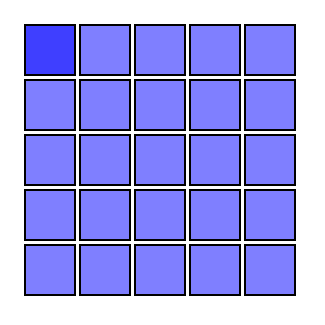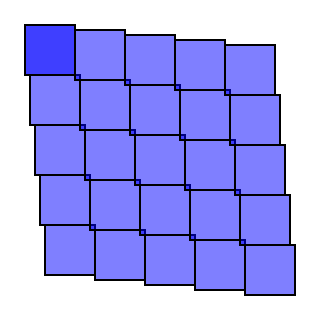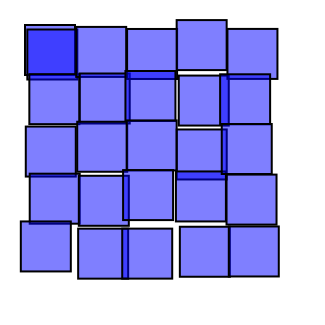| Inkscape » Tiling » Shift Tab |    |
|---|
The Shift tab allows one to vary the spacing between tiles. With the default parameters, rectangular tiles are arranged so that their Geometric bounding boxes are touching. The following options are available to add or subtract space between the tiles:
New in v0.46:
Cumulate: The previous shift is added to the new shift. For example, if there was a Shift X of 10%, normally the space between subsequent tiles would be 10%, 20%, 30%, etc. With this option, the shifts become 10%, (10+20)% (10+20+30)%, etc. This is useful when one is also scaling the tiles to keep the tile spacing constant. (See the Scale Tab section for an example.)New in v0.46:
Exclude tile: The tile width or height is excluded in the calculation of tile spacing. This is useful when using the Rotation option to put tiles on a circle. In this case, it is a shortcut for specifying a -100% shift.




Question: What is the symmetry of closely packed hexagons? The answer is P1 as can be seen below. One can use this fact to trivially generate the board for the game Hex invented independently by the mathematicians Piet Hein and John Nash.

© 2005-2008 Tavmjong Bah. | Get the book. |